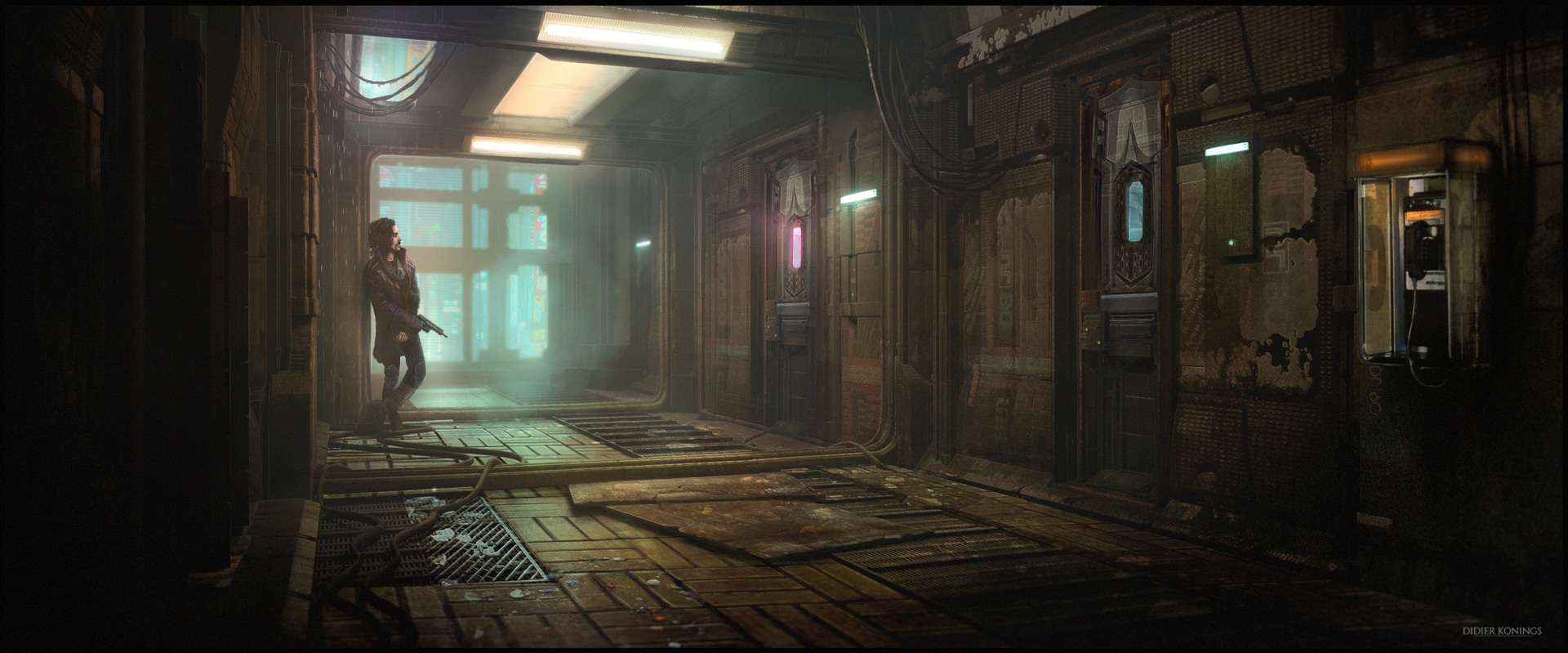Didier Konings is a Concept Artist, Matte Painter, and Production Designer. He is known for his work on on Wonder Woman, X-Men: Dark Phoenix, and many other film and television productions. Most recently, his launched his own production company, Night Road Studios, providing concept art services and directing his first film, Uncario. He uses KeyShot in his concept development and tells us why it’s such an important tool to his process.
Didier Konings
Modeling software used: Maya
Website | Artstation | Instagram | IMDB | Night Road Studios
What sparked your interest in Concept and Production Design?
From a very young age, I always knew I wanted to work in the film industry after I saw the movie Jurassic Park. I wanted to know how they made dinosaurs live. The magic goes away for a lot of people when they see ‘behind the scenes’ but for me it became even more magical when I saw how they made it. In years that followed, I started to realize that you could actually make a living with it. I still carry that same passion; film is my life and it always has been.
What was the turning point in your career? or highlights of your career?
The first highlight in my professional career was making concept art for Pirates of the Caribbean 5. I was a big fan of the franchise and once again watched the behind the scenes almost daily at the time. I had the opportunity to make some designs for Salazar’s crew. That was so much fun, you bet I had the soundtrack blasting while painting.
 Another highlight in my professional career was collaborating with Wes Ball on Mouse Guard. He is great and inspiring to work with since he used to be a VFX artist himself, he knows the process and speaks the same language. Besides, I had quite some freedom designing the environments for the film surrounded with a great team of other artists.
Another highlight in my professional career was collaborating with Wes Ball on Mouse Guard. He is great and inspiring to work with since he used to be a VFX artist himself, he knows the process and speaks the same language. Besides, I had quite some freedom designing the environments for the film surrounded with a great team of other artists.
A huge turning point in my career was starting my own company in 2020 named Night Road Studios. Because of this I was able to free up more time to resume my ambition to direct my own films while still being able to provide concept art services.
Most recently, I released my first short Uncario which won a bunch of nominations and awards on several film festivals. It’s amazing to see after years of hard work, passion and dedication that so far it’s well received. And I’m happy to share that it gained some interest for the short to become a feature film. We already have a draft for the story and a bunch of artworks in the form of a book. So fingers crossed!
What is unique about your approach to a project/design?
From a very young age through my high school in Rotterdam, I gained access to 3D Studio Max, Maya, Photoshop and After Effects. I wanted to learn everything about the animation and visual effect pipeline at the time. Because I experimented so much with VFX, I still use the same mindset, knowledge, tools and techniques in my daily workflow for concept art.
Where in the process do you use KeyShot?
Most of the time, I create my scenes/environments in Maya. When that’s all set up with a camera, I then import everything into KeyShot. Once again, with my compositing mindset, I know exactly what passes/material passes I need for the last steps in Photoshop. As a concept artist, I think it is important to stay in the flow.
The thing I like most about KeyShot is how quickly it works. First of all, the import speeds are really fast for the amount of crazy polycounts I sometimes import. I’m always surprised how fast it imports! I also love to work with the presets that come with KeyShot like the materials and HDRI environments. The default presets in KeyShot always look good and allows me to quickly try different looks which keep me in the flow. What I LOVE about the material presets is that I can click-and-drag a lot of different materials/shaders into my scenes to quickly find a flavour that works. Sometimes, I drag random materials or texture maps onto my entire scene to generate happy accidents and land on ideas I wouldn’t have come up with. Later, I will use it as a pass to blend with other passes for my composition in Photoshop.
What advice would you give to someone interested in doing what you do?
Strive to maintain a balance in your life where you always plan in time to work your personal projects. I was privileged to have worked on many amazing films and projects throughout my career but I feel it’s also important to find some time to work on your personal stuff where you are able to fully express yourself as an artist. Find a mentor who can guide you and point you in the right directions with the right resources. It really keeps your path clear and your learning curve efficient, especially now these days since there’s so much available! This sounds cliché, but always follow your passion and look back and reflect from time to time on what originally made you fall in love with what you do!
See more at interactiveaerial.com











